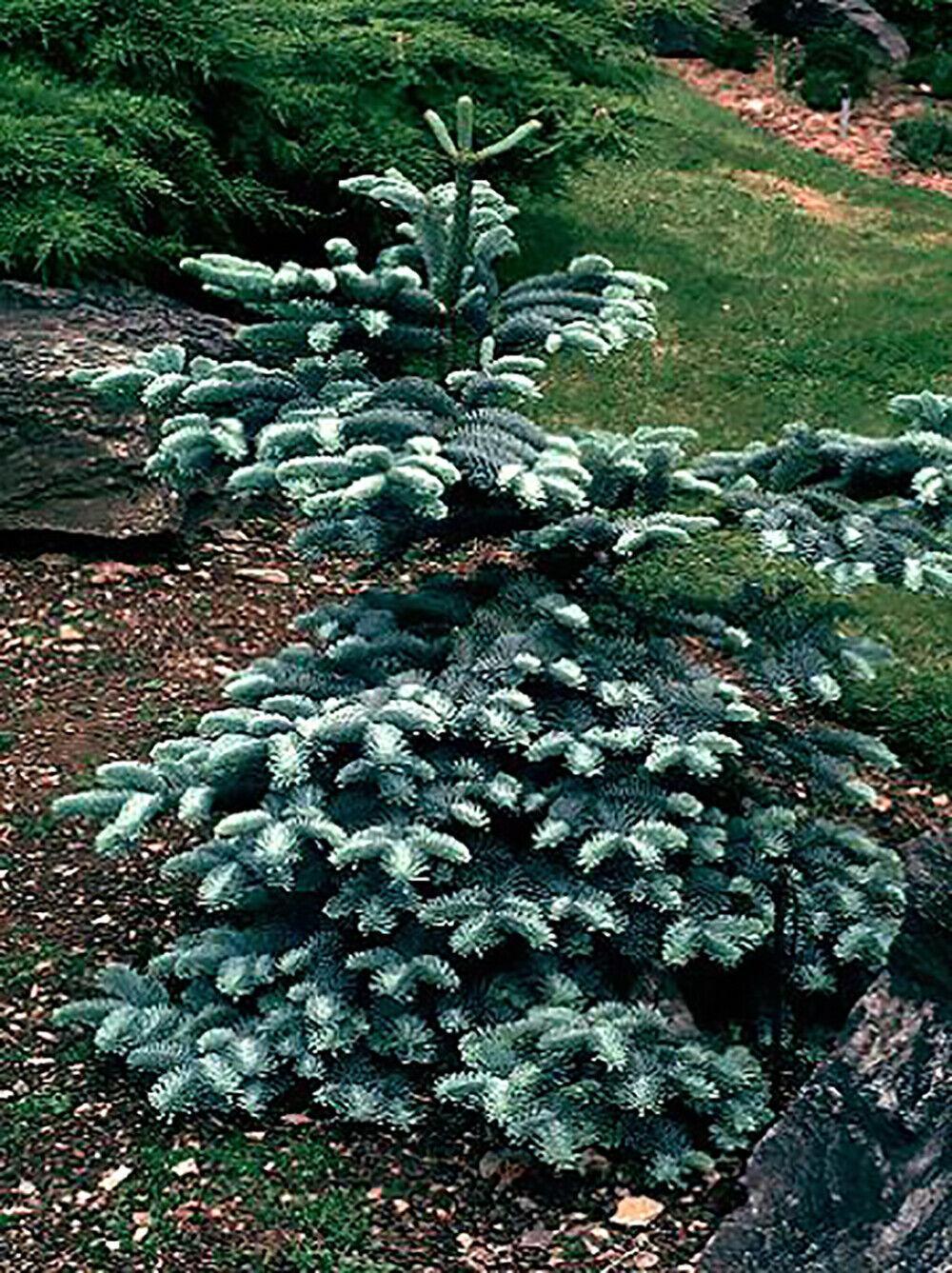Seed World
10 Blue Noble Fir (Abies Procera Glauca) Tree Seeds
10 Blue Noble Fir (Abies Procera Glauca) Tree Seeds
Couldn't load pickup availability
Blue Noble fir, Abies Procera Glauca, (Abies Nobilis), Tree Seeds
Noble Fir is a Western North American Fir, native to the Cascade Range and Coast Range mountains of extreme northwest California, Oregon, and Washington in the United States.
It is a high-altitude tree, typically occurring at 980 to 4,900 feet. It is a tall needled evergreen reaching 270 feet in native stands, generally 50 to 100 feet in cultivation. It has a symmetrical, narrow growth habit with blue-green conifer needles.
The bark on young trees is smooth, and grey with resin blisters, becoming red-brown, rough, and fissured on old trees. The cones are erect 4 to 10 inches long, and 3 inches wide with purple scales ripening to brown and disintegrating to release the winged seeds in the fall. It is a medium to slow grower, reaching 75 feet in 30 to 60 years. It likes moist well drained conditions with sun or partial shade and can do well in rocky soils if there is enough moisture.
Noble Fir is a popular Christmas tree. Wood is used for general structural purposes and paper manufacture.
This species is aptly named, for it is probably the largest of all Abies in terms of diameter, height, and wood volume. It was first found by fabled botanist-explorer David Douglas, growing in mountains on the north side of the Columbia River Gorge, where exceptional stands can still be found. It loves windy sites because it is one of the most windfarm trees, swaying grandly in even the most howling gales of winter.
Growth Rate: Slow to Moderate
Plant Type: Needled Evergreen Conifer
Family: Pinaceae
Native Range: Northwestern United States
Height: 50 to 100 feet, Can reach over 250 feet in the wild.
Shape: Slightly tapered cylindrical.
Sun: Full Sun
Fall Color: Evergreen
Drought Tolerance: Low to Moderate
Water: Moderate
Maintenance: Low
Site Requirements /Soil Tolerances: Prefers moist, cool, well-drained, acidic soil.
Uses: Specimen, Parks, Lawns, Christmas Tree, Bonsai
Share










